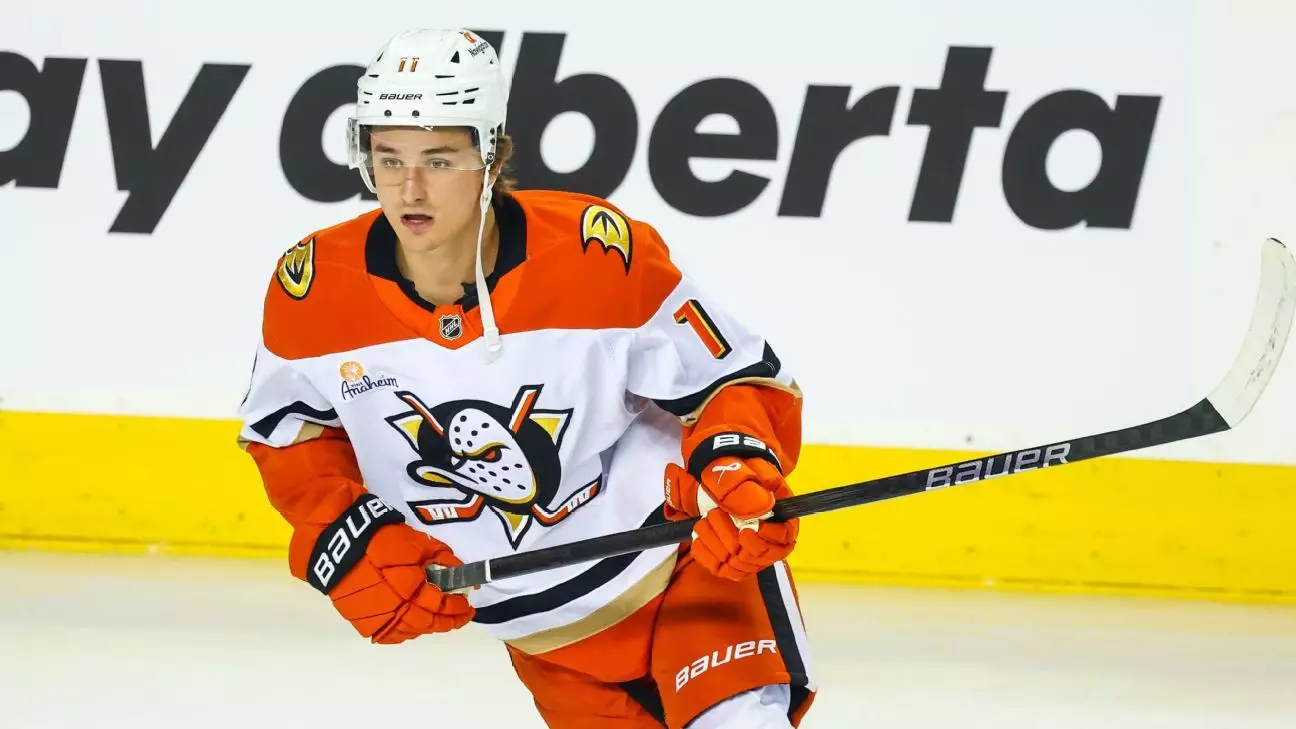The recent trade of Trevor Zegras from the Anaheim Ducks to the Philadelphia Flyers marks a defining moment for both franchises as they navigate the complexities of the NHL landscape. While this deal has been in the rumor mill for some time, its realization opens a range of opportunities, particularly for the Flyers, who are attempting to revamp their roster and become perennial contenders once again. Zegras, known for his dynamic scoring capability and playmaking talents, offers the Flyers a compelling prospect who could significantly elevate their offensive output.
At just 24 years old, Zegras arrives in Philadelphia carrying the weight of high expectations. Having scored 20 goals and accumulated over 60 points in consecutive seasons, his presence is a timely infusion of energy into a roster that finished 24th in goals per game last season. With Sean Couturier and Noah Cates already in the lineup, Zegras adds much-needed depth to the center position, with the hope that he can rise to become a top-line center and eventually spearhead a potent offense, capable of challenging for playoff berths.
Opportunity Amid Challenges
For Zegras, the transition to Philadelphia could be a career-defining moment, providing him the platform to rediscover and even surpass his previous form. Surrounded by young talents such as Tyson Foerster and Travis Konecny, alongside high-potential prospects like Matvei Michkov, the environment may foster a resurgence in his performance. Nonetheless, it is important to note that Zegras comes with a set of concerns regarding his recent injury history and inconsistencies that have marred his last two seasons. This presents a potential risk for the Flyers, who are banking on his ability to bounce back.
There’s a dual nature to the opportunity Zegras represents—while he has the potential to catalyze the Flyers’ offense, their investment in him must be scrutinized carefully. With an annual cap hit of $5.75 million, the Flyers need to ensure their faith in Zegras translates into production on the ice. If he cannot reclaim his scoring touch, they face the prospect of having significant cap space tied up in a player who might not meet their expectations.
Contemplating the Ducks’ Decision
On the flip side of the deal, the Ducks had their reasons for moving on from Zegras, especially given their recent draft successes. The emergence of Leo Carlsson and Mason McTavish has added immense depth to Anaheim’s center position, allowing them to entertain the idea of trading away a star player. With both of these young forwards performing well and proving they could handle the demands of top-line roles, Zegras became a luxury rather than a necessity for the Ducks.
From a financial perspective, the Ducks’ trade also indicates strategic foresight. With a projected cap space of over $36 million this season, they initially seem well-positioned. However, they must prepare for the financial reality of potentially paying multiple restricted free agents (RFAs) in the coming seasons. By trading Zegras, Anaheim not only sheds salary but also paves the way for manageable contracts for players like Lukas Dostal and Drew Helleson, who will be in line for raises in the near future.
The challenge for the Ducks now lies in maximizing the return from their trade. Acquiring Ryan Poehling—a 26-year-old forward who recorded a respectable 12 goals and 31 points last season—might not seem as thrilling as retaining a star like Zegras, but it represents a pragmatic approach to restructuring their roster. Poehling’s contract runs for just one more year at $1.9 million, making him a cost-effective choice as Anaheim prepares for future cap challenges.
Looking Toward the Future
Both front offices must now navigate uncharted waters that the trade brings. The Flyers, in particular, are investing hope in Zegras to resurrect their ambitions while potentially avoiding pitfalls with their financial commitments. The trade serves as a litmus test for the organization’s ability to cultivate talent and adapt to the evolving dynamics of the NHL.
As for the Ducks, the move suggests a commitment to building a competitive, younger roster capable of sustained success. The decisions made by Anaheim’s management will resonate in the team’s performance and its prospects in the upcoming seasons.
In the world of professional sports, trades are moments where the future can pivot dramatically, offering teams and players alike a bold new beginning—or, alas, a precarious risk. The Trevor Zegras trade encapsulates this duality perfectly, and only time will unveil the true winners and losers of this bold move.


Leave a Reply